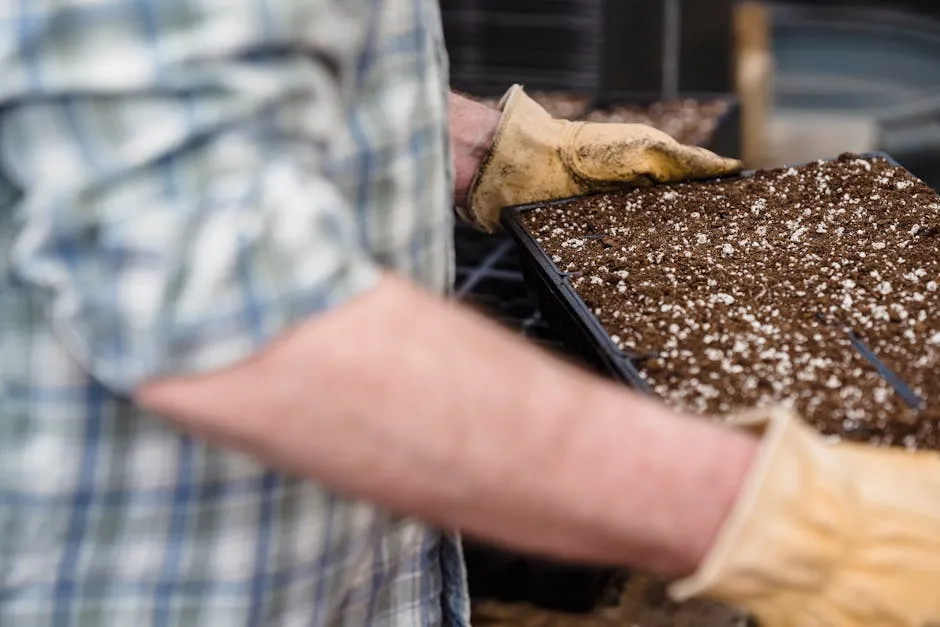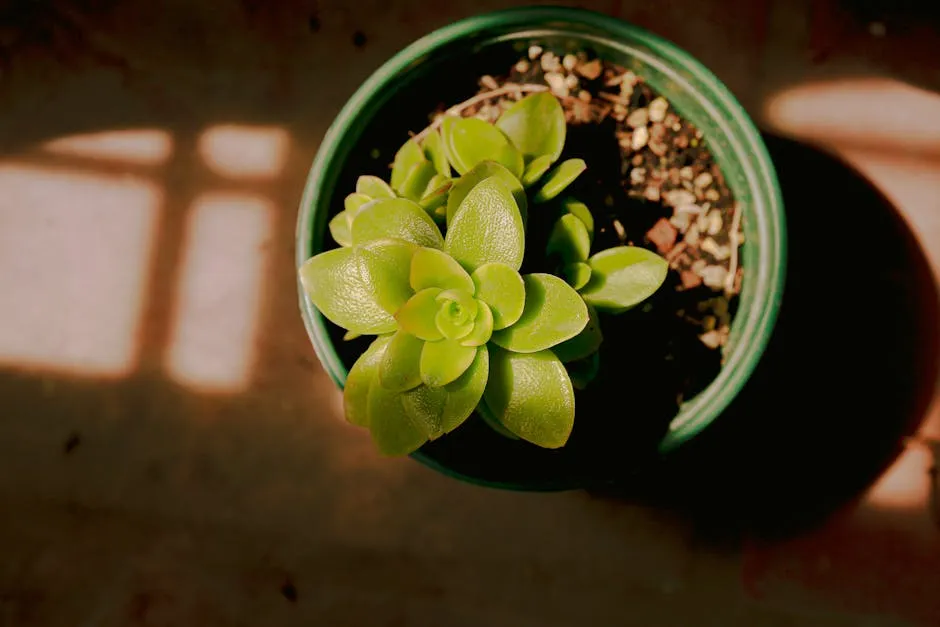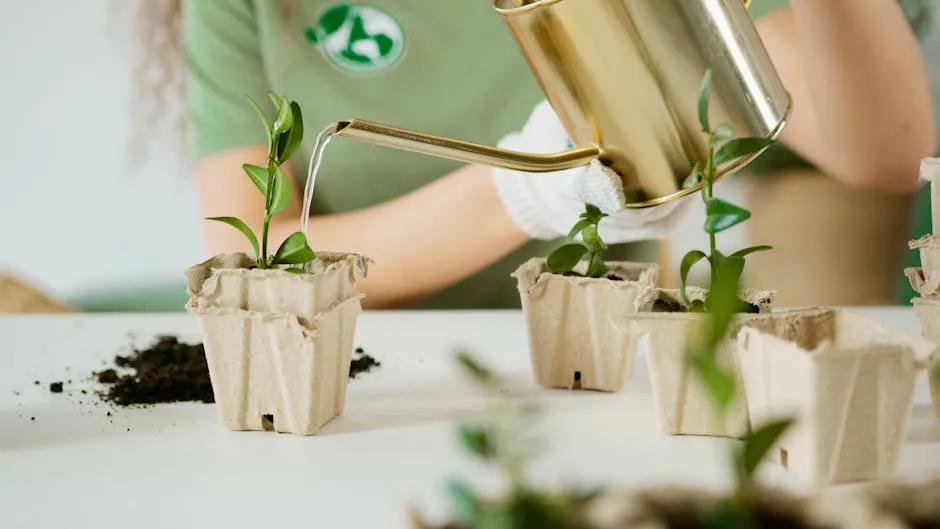

Everything You Need to Know About the Money Tree Plant
Introduction
In a world where financial woes loom large, the idea of a “money tree” might sound like a fairy tale. But before you start dreaming of dollar bills sprouting from its braided trunks, let’s explore the real magic of the Pachira aquatica. This tropical beauty is not just a houseplant; it symbolizes prosperity and good fortune, making it a popular choice for homes and offices alike.
Originating from the swampy regions of Central and South America, the money tree can grow up to 60 feet tall in its natural habitat. However, indoors, it’s commonly kept at a more manageable height, making it perfect for your living room or workspace. The braided trunk is more than just a stylish touch; it’s said to trap good fortune. Who wouldn’t want that?
This plant is a superstar in the world of Feng Shui, believed to bring positive energy and wealth when placed in the right spot. Its five-leaf clusters are thought to represent the five elements: earth, fire, water, wind, and metal. In some cultures, each stem with five leaves is a symbol of luck, while those with six leaves are considered extra lucky.
If you’re curious about how this plant can enhance your space (and maybe even your luck), stick around as we uncover everything from care tips to its rich history. You’ll learn how to keep your money tree thriving and maybe even discover a few secrets about its cultural significance along the way.
So, whether you’re a seasoned plant parent or a curious newbie, let’s dig into the delightful world of the money tree. Get ready to transform your indoor jungle into a lush paradise that might just sprinkle a little extra fortune into your life. Who knew that nurturing a plant could feel so rewarding? Let’s get started!

Summary Section
The money tree plant, scientifically known as Pachira aquatica, is much more than just a visually appealing houseplant. This article will explore the key aspects of the money tree, including:
- Symbolism and Cultural Significance: Discover why this plant is linked to good fortune, especially in Feng Shui practices.
- Ideal Growing Conditions: Learn about the light, water, temperature, and humidity needs that will keep your money tree thriving.
- Care Tips and Maintenance: From watering and fertilizing to pruning and repotting, we’ll provide essential care guidelines to help you avoid common pitfalls like overwatering and leaf drop.
- Propagation Techniques: Interested in expanding your indoor garden? We’ll cover how to propagate your money tree successfully.
- Common Issues and Solutions: Discuss the most frequent problems and their fixes, ensuring your plant remains healthy.
- Companion Plants: Find out which plants make great companions for your money tree, enhancing both aesthetics and air quality.
By the end of this article, you’ll be well-equipped to care for your money tree and perhaps even invite a little extra luck into your life. With proper care, your money tree can flourish, bringing both beauty and positive vibes to your home. Happy gardening!

What is a Money Tree?
Overview of the Money Tree Plant
The money tree plant, known scientifically as Pachira aquatica, originates from the lush wetlands of Central and South America. In its natural habitat, this tropical beauty can grow up to 60 feet tall. But fear not, plant lovers! Indoors, it usually stays at a more manageable height. This makes it a popular choice for homes, offices, and even those tiny apartments that might feel like a jungle in themselves.
One of the most eye-catching features of the money tree is its braided trunk. Not just for looks, this unique styling is believed to trap good fortune. Each trunk typically supports five-leaf clusters, with each leaf representing the five elements: earth, fire, water, wind, and metal. Talk about a multitasker!
The money tree has also made a name for itself in the world of Feng Shui. Placing this plant in your home is thought to bring positive energy and prosperity. It’s often given as a housewarming gift, which is just perfect for anyone looking to invite a little luck into their new space. If you want to impress your friends, gifting a money tree is a surefire way to do it. Who wouldn’t want a little good fortune on their coffee table?
To ensure your money tree stays healthy and happy, consider using a plant pot with drainage. This will help prevent water from accumulating at the bottom, reducing the risk of root rot and keeping your tree thriving.

The Symbolism Behind the Money Tree
The cultural significance of the money tree is rich and varied, especially in East Asia. Legend has it that a poor man stumbled upon this plant and prayed for prosperity. It’s said that his prayers were answered, leading to the widespread belief that the money tree brings wealth and success.
In many traditions, the plant symbolizes good luck and financial stability. The five leaves on each stem are seen as a sign of balance and harmony. Some even consider stems with six leaves to be extra lucky! The care you provide to the money tree is also tied to concepts of prosperity. A well-cared-for plant signifies that you are nurturing not just the tree, but also your own fortune.
Every time you water it, you’re not just quenching its thirst; you’re actively engaging in a ritual that connects you to abundance. So next time you’re tending to your money tree, remember: you’re cultivating more than just a plant. You’re nurturing your own path to prosperity!
In summary, the money tree plant is a captivating blend of beauty and symbolism. With its braided trunk and clusters of leaves, it serves as a striking addition to your home. Plus, who wouldn’t want a little extra luck and prosperity in their life?

Temperature and Humidity Preferences
Money trees thrive in a cozy environment. The ideal temperature range for your Pachira aquatica is between 65°F to 75°F. This range keeps your plant happy and healthy. Avoid cold drafts like a sneeze at a wedding—nobody likes that!
Humidity levels are just as important. Money trees enjoy moderate to high humidity. If your home feels like a desert, your plant might not be too pleased. To boost humidity, mist the leaves occasionally. Alternatively, consider placing a pebble tray for humidity beneath the pot. As the water evaporates, it creates a humid microclimate. Your money tree will feel like it’s lounging in a tropical paradise!

Soil and Fertilization
Selecting the right soil is crucial for your money tree’s success. A well-draining potting mix is your best bet. Look for mixes containing peat moss, perlite, or sand. These components ensure proper drainage while providing nutrients. Nobody wants their plant to sit in soggy soil—it’s a surefire path to disaster!
When it comes to fertilization, a little goes a long way. Use a balanced organic potting soil at half strength. Apply this monthly during the growing season, which is spring and summer. Your money tree will soak up the nutrients like a sponge on a rainy day. Just remember to water it beforehand to prevent root burn. Happy feeding!

Common Issues and How to Solve Them
Leaf Drop and Yellowing
Let’s face it: leaf drop and yellowing can be alarming. But fear not! The culprits are often overwatering or insufficient light. If your leaves start playing hide and seek, check your watering schedule. Money trees prefer to dry out between waterings. Aim for the top 2 inches of soil to be dry before you reach for that watering can.
On the other hand, if your plant is getting too much direct sunlight, it might just be a bit scorched. Yellowing leaves can signal this distress. Move your tree to a spot with bright, indirect light. A happier tree means healthier leaves!

Root Rot
Ah, root rot—the nemesis of many a plant parent. This sneaky issue arises from overwatering, leading to mushy roots. If you notice droopy leaves and a soft trunk, it’s time to investigate. Gently remove the plant from its pot to inspect the roots. Healthy roots should be firm and white.
If you spot brown, mushy roots, it’s a clear sign of root rot. Trim away the affected areas with sterilized pruning shears. Repot your money tree in fresh, well-draining soil, and cut back on watering. Your plant will bounce back in no time, ready to thrive!

Pest Management
Pests can be pesky little intruders. Common offenders include aphids, spider mites, and mealybugs. But don’t grab the bug spray just yet! A natural solution can work wonders. Try mixing a bit of insecticidal soap spray with warm water. Spray it on the affected areas, and watch those pests scurry away like they just saw a cat!
Regularly check your money tree for signs of pests. Early detection is key to keeping your plant healthy. With a little vigilance and care, you can keep your money tree pest-free and thriving. It’s all in a day’s work for a dedicated plant parent!

Propagation Techniques
Methods of Propagation
Ready to expand your money tree collection? Propagating your Pachira aquatica through stem cuttings is a breeze! Here’s how you can get started:
- Select a Healthy Stem: Choose a stem that is at least six inches long and has multiple leaves. The more nodes, the better.
- Make the Cut: With clean, sharp scissors, snip the stem just below a leaf node. This is where the roots will sprout.
- Let It Heal: Place the cutting in a cool, dry spot for a day or two. This allows the cut end to callous over, reducing the risk of rot.
- Water Time: Fill a glass or jar with clean water and place the cutting inside, ensuring the leaf nodes are submerged but the leaves are not.
- Bright, Indirect Light: Set your jar in a spot that gets bright, indirect sunlight. Avoid direct rays, as they might scorch the cutting.
- Change the Water: Refresh the water every few days to keep it clean and oxygenated. Soon, you’ll see tiny roots forming!
Once your cutting has developed a few roots, generally after a few weeks, it’s time to pot it up. Use a watering can to make this task easier and more precise.
- Choose Your Pot: Select a small pot with drainage holes. A well-draining potting mix works best.
- Plant It: Gently plant the rooted cutting in the soil, making sure to keep the roots intact.
- Watering: Water lightly, ensuring the soil is moist but not soggy. Overwatering can lead to root rot—nobody wants that!
Now comes the fun part! Care for your new money tree by keeping it in bright, indirect light and maintaining a regular watering schedule. Your cutting will thrive, and with a little patience, you’ll soon have a lovely new money tree to enjoy.

Braid Your Money Tree
How to Braid a Money Tree
Braiding your money tree isn’t just for aesthetics; it’s a fun way to create a unique centerpiece! If you have a few young trees sprouting up, it’s time to get braiding. Here’s your step-by-step guide:
- Gather Your Trees: Select three to six young money trees that are about 15-16 inches tall. The more, the merrier!
- Prepare the Area: Find a flat surface where you can comfortably work. A little light music can help set the mood!
- Start Braiding: Gently take the trunks of the trees and start to braid them together. Begin at the base and work your way up. Don’t pull too tight; you don’t want to snap those precious stems.
- Secure the Ends: Once you reach the top, tie the braid together with soft twine or string. This will keep your braid intact as the trees grow.
- Continue to Braid: As your money trees grow, continue to braid them periodically. This will create a beautiful, cohesive look that adds character to your plant.
- Regular Maintenance: Trim any unruly leaves or branches to maintain the shape. This will ensure your braided beauty looks neat and tidy.
And there you have it! A braided money tree that’s ready to bring good vibes and prosperity to your space. Get ready for compliments from friends and family. Who knew plant care could be this stylish?

Companion Plants
Best Companion Plants for a Money Tree
Selecting the right companions can elevate your money tree experience! Here are some of the best plants that complement your Pachira aquatica:
- Peace Lily (Spathiphyllum): This beauty is an air-purifier superstar! With its elegant white blooms and glossy leaves, it pairs beautifully with the money tree. Plus, it enjoys similar humidity levels. Learn more about caring for peace lilies here.
- Swiss Cheese Monstera (Monstera adansonii): Known for its unique, holey leaves, this plant adds a tropical vibe. It thrives in bright, indirect light, just like your money tree.
- Philodendron Birkin: With its striking variegated leaves, this plant brings a pop of interest to your indoor garden. It’s low-maintenance and enjoys similar light conditions.
- Lucky Bamboo (Dracaena sanderiana): This plant is often associated with good luck, making it a perfect companion. It thrives in water and can tolerate low light, so it won’t compete for space.
- Good Luck Plant (Cordyline fruticosa ‘Glauca’): This ornamental beauty adds a splash of color to your collection. It prefers similar care, making it a harmonious addition.
These companions not only enhance your space aesthetically but also create a beautiful synergy in care requirements. Plant them together, and you’ll have a thriving indoor jungle that’s sure to bring good fortune!

Conclusion
In conclusion, the money tree plant is a stunning addition to any home, cherished not only for its beauty but also for its symbolic connection to prosperity and fortune. These tropical wonders, with their distinctive braided trunks and lush green leaves, do more than just beautify your living space—they invite good vibes and positive energy.
Caring for your money tree is a breeze. With the right care, your money tree can thrive, bringing a sense of calm and positivity to your space. This plant is an excellent choice whether you’re a seasoned plant parent or just starting your green journey. Just make sure to provide it with bright, indirect light and water it properly—too much or too little can lead to unhappy leaves.
Don’t be surprised if your money tree becomes the star of the show! Friends and family will likely admire its unique appearance and the good fortune it symbolizes. Plus, its non-toxic nature makes it a safe option for homes with pets—no need to worry about furry friends nibbling on the leaves!
For those moments of zen and relaxation, consider enhancing your space with a set of aromatherapy essential oils to create a soothing atmosphere while you care for your plant.
Whether placed in your living room, home office, or even your bedroom, the money tree plant can adapt to various environments. It’s a true testament to the beauty of nature and its ability to enhance our lives. So, go ahead and embrace the charm of this plant! You might just find that nurturing a money tree will not only beautify your space but also sprinkle a little extra luck into your life.

Happy gardening! May your money tree flourish, and may you reap the benefits of its positive energy for years to come.
FAQs
Is the money tree plant toxic to pets?
No, the money tree plant is non-toxic to both cats and dogs. So, let your furry friends roam around without worry!
How often should I water my money tree?
Water your money tree every 1-2 weeks, allowing the top 2 inches of soil to dry out between waterings. Remember, it’s better to underwater than overwater!
Can I keep my money tree outdoors?
Yes, but only in warm climates (zones 10-12) and in shaded areas to prevent leaf scorch. It enjoys a little sunlight but not too much!
Why are the leaves of my money tree turning yellow?
Yellowing leaves can indicate overwatering or insufficient light. Check your watering schedule and make sure it’s getting enough indirect sunlight.
How can I encourage my money tree to grow faster?
Ensure it receives adequate light, nutrients, and humidity. Consider repotting every 2-3 years to provide fresh soil. A little TLC goes a long way!
Please let us know what you think about our content by leaving a comment down below!
Thank you for reading till here 🙂
All images from Pexels



